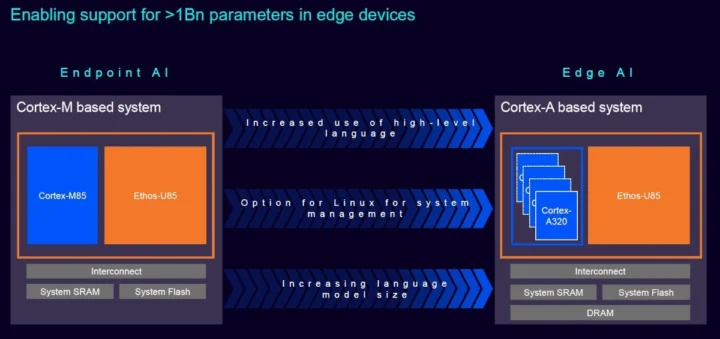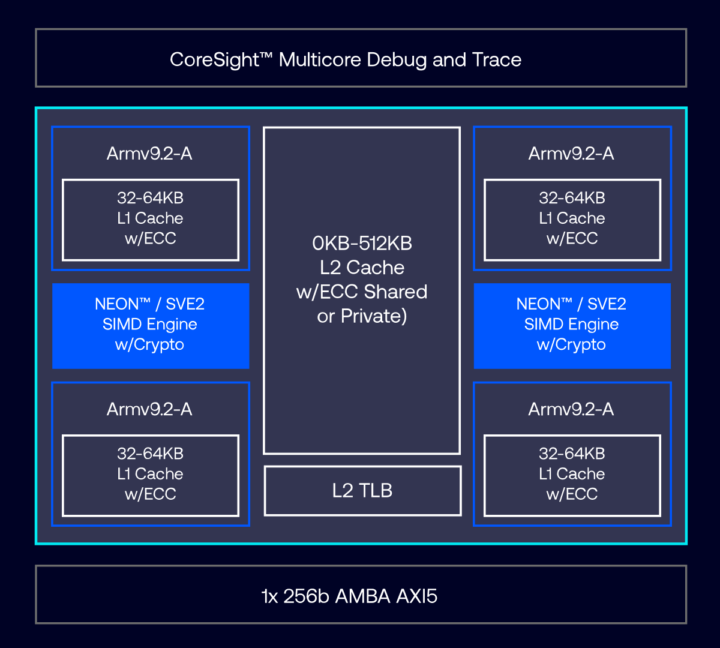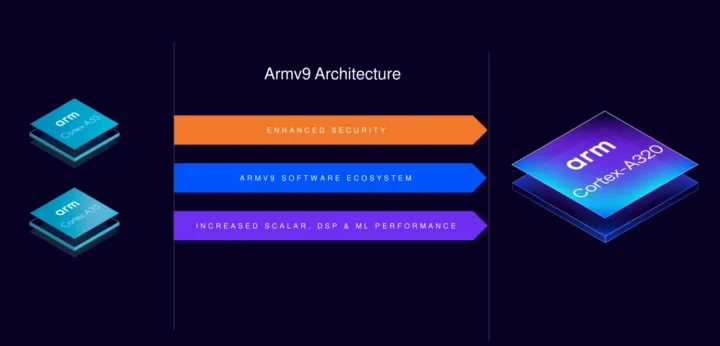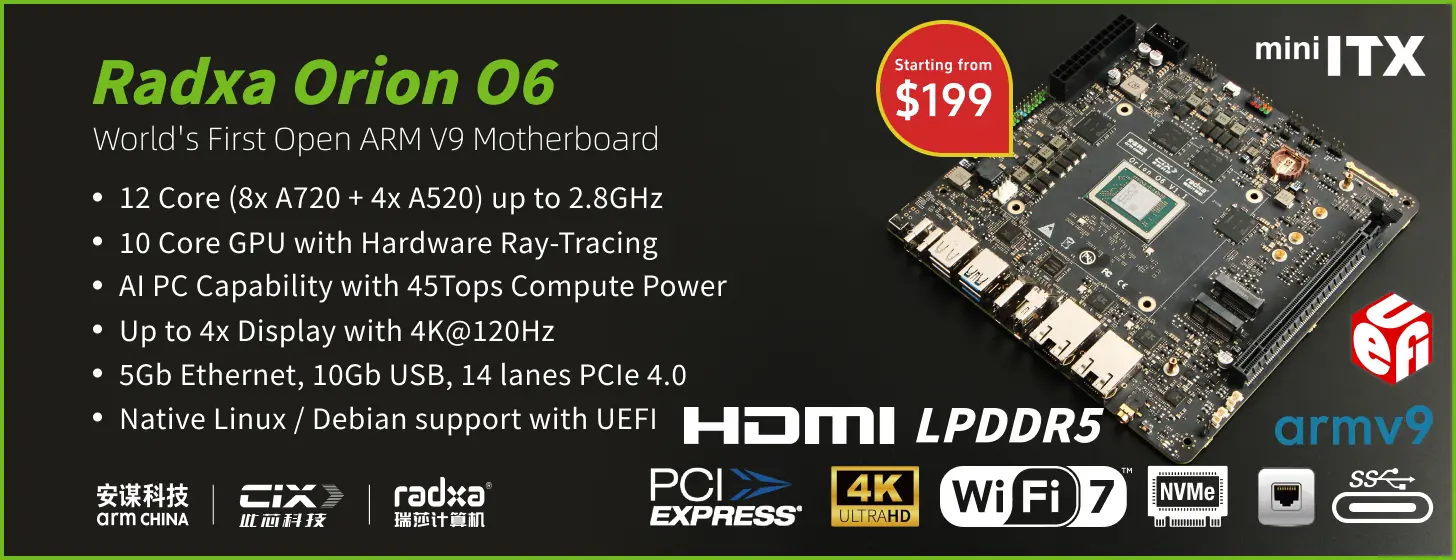Arm Cortex-A320 is a low-power Armv9 CPU core optimized for Edge AI and IoT applications, with up to 50% efficiency improvements over the Cortex-A520 CPU core. It is the smallest Armv9 core unveiled so far.
The Armv9 architecture was first introduced in 2021 with a focus on AI and specialized cores, followed by the first Armv9 cores – Cortex-A510, Cortex-A710, Cortex-X2 – unveiled later that year and targeting flagship mobile devices. Since then we’ve seen Armv9 cores on a wider range of smartphones, high-end Armv9 motherboards, and TV boxes, The upcoming Rockchip RK3688 AIoT SoC also features Armv9 but targets high-end applications. The new Arm Cortex-A320 will expand Armv9 usage to a much wider range of IoT devices including power-constrained Edge AI devices.
Arm Cortex-A320 highlights:
- Architecture – Armv9.2-A (Harvard)
- Extensions
- Up to Armv8.7 extensions
- QARMA3 extensions
- SVE2 extensions
- Memory Tagging Extensions (MTE) (including Asymmetric MTE)
- Cryptography extensions
- RAS extensions
- Microarchitecture
- In-order pipeline
- Partial superscalar support
- NEON/Floating Point Unit
- Optional Cryptography Unit
- Up to 4x CPUs in cluster
- 40-bit Physical Addressing (PA)
- Memory system and external interfaces
- 32KB or 64KB L1 I-Cache / D-Cache
- Optional L2 Cache – 128KB, 192KB, 256KB, 384KB, or 512KB
- No L3 Cache
- ECC Support
- Bus interfaces – AMBA AXI5
- No ACP, No Peripheral Port
- Security – TrustZone, Secure EL2, MTE, PAC/BTI
- Debugging
- Debug – Armv9.2-A features
- CoreSightv3
- Embedded Trace Extension (ETEv1.1)
- Trace Buffer Extension
- Misc
- Interrupts – GIC interface, GICv4.1
- Generic timer – Armv9.2-A
- PMUv3.7

The Cortex-A320 can be combined with the Ethos-U85 NPU for Edge AI, providing an upgrade path to Cortex-M85+Ethos-U85-based Endpoint AI devices, with support for LLMs with up to one billion parameters, and Linux or Android operating systems, besides RTOSes like FreeRTOS or Zephyr OS. We’re also told a quad-core Cortex-A320 can execute up to 256 GOPS, measured in 8-bit MACs/cycle when running at 2GHz.
Besides the 50% efficiency improvements over the Cortex-A520, Arm says the performance of the Cortex-A320 has improved by more than 30% in SPECINT2K6, compared to its Armv8 predecessor, the Cortex-A35 thanks to efficient branch predictors and pre-fetchers, and memory system improvements.
The Cortex-A320 also makes use of NEON and SVE2 improvements in the Armv9 architecture to deliver up to 10x better machine learning (ML) performance compared to Cortex-A35, or up to 6x higher ML performance than the Cortex-A53. With these ML improvements and high area and energy efficiencies, Arm claims that the Arm Cortex-A320 is the most efficient core in ML applications across all Arm Cortex-A CPUs.
Renesas may be one of the first companies to launch an Arm Cortex-A320 SoC likely in 2026 as they are one of the few partners mentioned in the press release, and they were the first to introduce an Arm Cortex-M85 microcontroller, over a year after the core was unveiled. More details about the Cortex-A320 CPU core can also be found on a blog post and Arm’s developer website.

Jean-Luc started CNX Software in 2010 as a part-time endeavor, before quitting his job as a software engineering manager, and starting to write daily news, and reviews full time later in 2011.
Support CNX Software! Donate via cryptocurrencies, become a Patron on Patreon, or purchase goods on Amazon or Aliexpress







I was wondering about this type of core.
Would use a tablet with 1x Cortex-X4 and 7x Cortex-A320.
It could be a ghost core like A34 or A32 or A65. Maybe set top box manufacturers will make more use of it. But Allwinner or Rockchip have to design the whole soc.